In early December 1961, a United States Air Force rocket took off from Vandenberg Air Force Base in California carrying a special payload. The main payload was a Corona surveillance satellite, but tucked just aft of that spacecraft was a tiny package of homebrew electronics stuffed into something the looked like a slice of cake. What was in that package and how it came to tag along on a top-secret military mission is the story of OSCAR 1, the world’s first amateur radio satellite.
The Sputnik Crisis
The late 1950s were a tumultuous time in a lot of ways, but the 1957 launch of Sputnik by the Soviets really kicked things into high gear. In a single day, humanity had been transformed into a space-faring species, a fact anyone could witness just by looking into the sky around sunset as that polished sphere orbited the planet. And you could listen in, too – Sputnik’s 20 and 40 MHz beacons were easily picked up on shortwave sets. Amateur radio operators all over the world tuned to Sputnik’s beacon. In fact, the first re-broadcast of Sputnik’s signal to the general public was courtesy of the Columbia University amateur radio club; members recorded the signal and played the tape over the university’s FM station, beating NBC to the punch.
The “Sputnik Crisis” that ensued was a catalyst for a lot of the changes that led to the world we know today; after all, one of the agencies created to deal with Sputnik was the Advanced Research Projects Agency, or ARPA, which later became DARPA and led to the Internet. But Sputnik also had immediate effects, two of which would combine to make an amateur radio satellite a reality within a few short years. First, Sputnik provided focus for a struggling American space program; beset by a very spectacular series of public failures, Soviet success provided the impetus for the Americans to start getting things right on space delivery systems. And three weeks of listening to the simple shortwave beeps as Sputnik orbited inspired some hams to dream an audacious dream – to build and launch their own satellite.
The Mercedes Man’s Baby
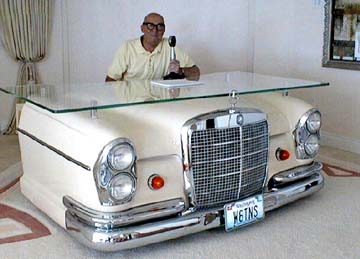
The first glimmers of what was to become Project OSCAR – a somewhat forced acronym for “Orbital Satellite Carrying Amateur Radio” – came in 1959, barely two years after Sputnik. To call the idea audacious is an understatement. Space exploration at the time was the turf of the superpowers; after all, who else would have the resources to put a package into orbit? And so when Don Stoner, a man who would later build his radio shack into the front of a Mercedes, wrote an article that year in CQ Magazine decrying the fact that hams were being left behind in the space race and that they could easily build a satellite if only somebody had a missile handy to launch it, it actually got noticed, and in an atmosphere of “Sputnik fever”, things started happening.
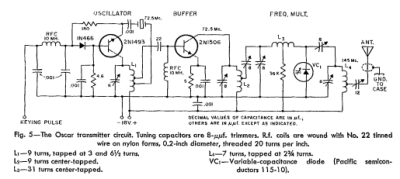
Hams in California started brainstorming about what an amateur radio satellite would look like. While setting a stretch goal of building an orbiting repeater that all hams could access, they also recognized the need for baby steps, and so began designing a simple beacon. Still lacking a delivery vehicle, they stuck to the electronic design and settled on a simple transistorized VHF transmitter. It would be battery-powered to avoid the complexities of solar power, transmitting a simple beacon signal over a monopole antenna. Transmissions would be the classic Morse cypher for laughter, “HI”, sent by an electronic keyer that would vary the speed of the signal based on the temperature of the satellite.
Socially Engineered Launch Vehicle
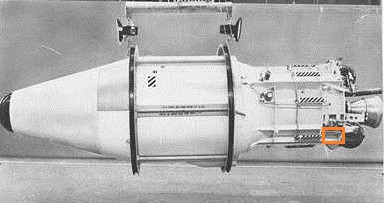
There aren’t a lot of details out there on how the hams managed to convince the Air Force to let them piggyback onto a mission. The fact that a good number of the OSCAR hams had day jobs in the burgeoning aerospace industry in California was probably a factor, and Stoner himself mentions a 1960 meeting between the would-be satellite builders and the chief of the Space Instrumentation Section at JPL, himself a ham. It would appear that when you want to get a package into orbit, it pays to have connections.
Whatever social engineering went on, the net result was an agreement to piggyback on an upcoming Air Force launch. The satellite was Discoverer 36, a KH-3 Corona surveillance satellite designed to take photographs from orbit and return the film package on a parachute that would be snared by a plane. The amateurs were offered some space in the aft of the payload compartment, space that would normally be occupied by ballast. This set the physical parameters for the satellite, and construction began.
The wedge-shaped body that resulted ended up being only about 10 pounds thanks to its magnesium skin and frame. The builders knew they’d have no attitude control or active systems to manage heat gain, so they settled on passive thermal management. The body was gold-plated to reflect as much incident sunlight as possible. Strips of absorptive paint were then added to the outside to absorb some heat to keep the innards from freezing, and the space inside was filled with foam insulation.
Having been built for a grand total of $63 in parts and now dubbed OSCAR 1, the satellite was tested as best as it could be given an essentially non-existent budget. The build team had to prove that their package not only wouldn’t jeopardize the reconnaissance mission of Discoverer 36, but that they had a decent chance to succeed in their own mission. Airplane flights with a mockup of the satellite were conducted around California, with hams volunteering to monitor the beacon. Procedures were put into place for ground monitoring of the signals. The energy budget of the mercury batteries was tweaked by manipulating the transmitter power, and the thermal characteristics of the spacecraft were analyzed.
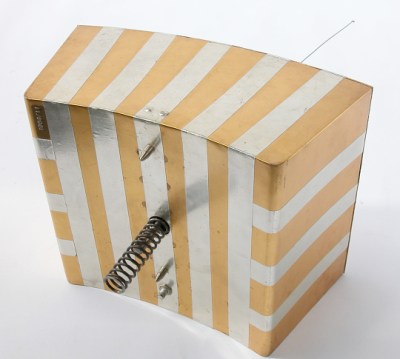
Finally, on December 12th, the Thor booster lifted off with OSCAR aboard. Once in orbit, an explosive bolt released, and a spring that had been bought at Sears for a buck ejected the world’s first non-governmental satellite from its mothership. It entered its own orbit and immediately began transmitting its friendly “di-di-di-dit di-dit” greeting to hams the world over. OSCAR 1 worked flawlessly, transmitting for 20 days before the batteries died. A total of 570 hams from 28 countries reported hearing OSCAR 1, which completed about 280 orbits before reentry in late January 1962.
For a minimalist build, OSCAR 1 was hugely successful. Aside from achieving the goal of placing amateur radio in space and proving that civilian groups could cooperate with the military and huge government contractors, OSCAR yielded valuable data, especially on the thermal management system. This was used to improve the thermal design of OSCAR 2, essentially a clone of the first satellite, and eventually OSCAR 3, the first amateur repeater in space. The OSCAR team also invented the concept of launching a sub-satellite from a larger bus and proved that it would work.
The OSCAR project eventually morphed into AMSAT, a volunteer group that has launched a fleet of amateur radio satellites and still runs them today. A small constellation of amateur satellites now orbits the planet, and ham radio is firmly entrenched in space. And it all started with a $63 satellite that was built in a basement by a bunch of hackers who knew what they wanted to accomplish, and found a way to succeed.
[Main image source: National Air and Space Museum]

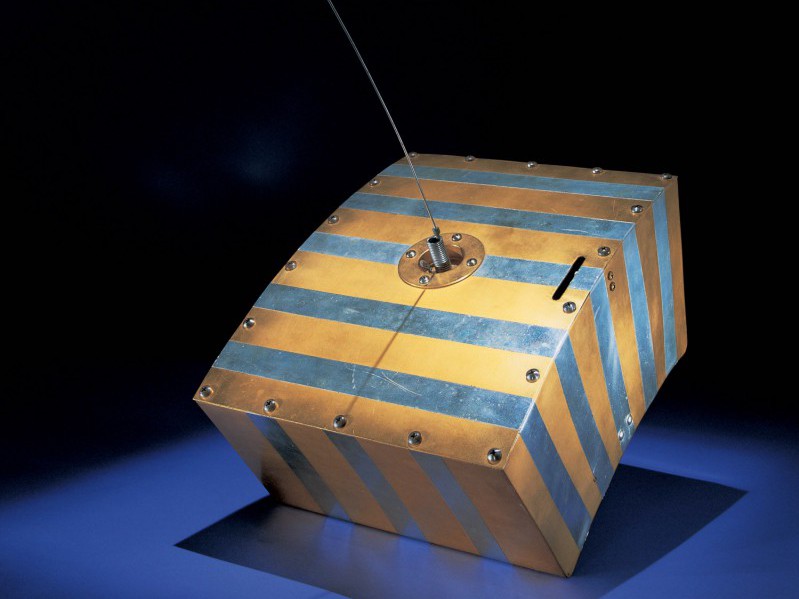














pretty cool
A $63 satellite that was built in a basement. Those were the days…
$63 in 1961 dollars equates to $500 today.
That’s still basically free, in satellite terms.
Aren’t cube satellites popular these days?
Yes, cubesats also known as microsats are flown by several Universities around the World. AMSAT’s next “big” advancement will be a digital communications satellite in Geosynchronous orbit… to be flown towards the end of 2016.
Yes. They are referred to as cubesats or microsats. Universities who are putting satellites into space are using the cubesat technology. We are in the process of building a digital communications satellite that will be in Geosynchronous orbit by the end of 2016.
In the event that figure is true, there should be miles long line, amateur satellites waiting for a ride into orbit. I’m not seeing news of that. While amateur radio operators have reputation of being tight fisted, I don’t think it would be difficult to find ten hams that would fork over $50, or 50 hams willing to fork over $10. Yes I understand their are costs beyond building the bird. As the requirement the birds go through a rigid stress test, liability insurance, even if no no fuel aboard the satellite.
And it went for a ride on an extremely secret mission.
great write-up!
There are ham radio operators working on a piggyback payload to the moon as we speak.
As I’m not involved in the project, I can’t give further details
I thought that Oscar 1 sent HI, not VA as in the text above? :)
it says dit not dah, i made the same mistake had to make a trip to google to be sure
+1. Just to be super-picky, the transcription should be “dit-dit-dit-dit… dit-dit”. That said, nice article!
The master sergeant respectfully disagrees with you:
https://www.youtube.com/watch?v=MNfiWmuqvGo&feature=youtu.be&t=2m47s
Seriously, I was always taught to transcribe adjacent dits with only the last dit fully spelled out, and to say it exactly like that – “di-di-di-dit”. Adjacent dahs were similar – da-da-da-dah – but pronounced more like “du-du-du-dah”. That was many years ago, when there was still a Novice class and you needed code for even that. Which is probably why I waited 40 years more to get my ticket.
Love the history piece!
You covered two of my favorite subjects, the space race and amateur radio. Please keep ’em coming!
A good piece.
Right now, hams are poised to have our first geosynchronous satellite. Now, THAT will be something.
All the uplink and downlink for Nanosat-3 (University of Texas’ FASTRAC stack, FAST1 and FAST2) was amateur radio. Only reason I have a callsign today.
The late Vin Lally, a weather balloon scientist once related at a party how he “nearly started World War III”.
His crew launched a long range weather balloon with a radio transmitter. By clipping diodes in the transmitter, a Morse Code signal could be sent. They put small holes in the balloon, to have it fall to Earth after a calculated time, and launched it with all the diodes in the transmitter intact.
I got called away…
Anyway, the default Morse Code for the transmitter was “HI”
Long story short…
Several days later one of Vin’s colleagues called him into his office, and had him listen to a shortwave radio.
“di-di-di-did di-dit” was clearly heard. Vin figured his balloon had circled the Earth, and in doing so crossed Soviet airspace. The Pentagon was notified, the Strategic Air Command was alerted, and pilots would be scrambled if the balloon re-entered U.S. airspace. The pilots were instructed to fly right through the balloon to destroy it. As a precaution, the Soviets were notified of the wayward balloon, and its incursion of Soviet airspace was totally accidental (Heads probably rolled in the Soviet defense force for having allowed the balloon to enter and traverse their airspace undetected and unchallenged)
In the end, it turned out to be the Ham satellite that was transmitting the “HI”, while encircling the globe!
How did it do the Morse keying? A mechanical encoder disk? Some more information on the circuitry would be interesting, besides just the transmitter.
Impressive it managed to run off a battery, I presume it was fairly low power, and still be heard on the ground, without needing dish antennas.
The Feb 1962 QST article says: “The transmitter keyer makes use of digital circuits which may not be familiar to many amateurs. Space does not permit a detailed description of the keyer in the present article, but the circuits in general are similar to those that have been used in electronic keyers”
That was the frustrating part about writing this. So much of the information is either tucked away somewhere hard to find or just plain gone. I finally joined ARRL specifically for this article so I’d have access to the QST archive. I was going to do it anyway. Still, to have the main QST article give you “you don’t need to know what the keyer looked like” was really disappointing.
One of the hams who helped build OSCAR 1 is still around. Lance Ginner. Lance is retired from Lockheed and lives in the Bay Area. Lance has lots of great stories to tell. I was a Junior in High School and had just gotten my ham license when this was happening.
Lance Ginner’s picture kept showing up all over the place in the OSCAR 1 docs. Either he was really good at getting himself in pictures or he did a ton of the work on OSCAR 1. IIRC, he was a Lockheed employee working on Discoverer 36. So he was probably instrumental in getting the package delivered too. Talk about being the indispensable man.
I suspect it may of used a diode matrix, I believe electronic keyer circuits of that era used that technique.
It just needs to send 6 dits, with a space between four and two.
I don’t know what was used, but surely the message was chosen for this.
It only had to send six dits, with a space after the first four. I have no idea how they did it, but I’d guess something simple rather than a universal encoder.
The QST article was not a construction article. Nobody was building their own satellite, and that keyer wouldn’t have had some other use. I recall reading that they got special permission to use “hi” as the callsign.
Don’t forget, there was an element of telemetry. The speed varied as something, battery voltage or temperature, varied, so back on earth they got some information.
dont need a whole lot of power to send a message in free space a hundred km or so
You have to go through the ionosphere (well, the satellite was IN it), all kinds of weird crap happen there…
Yeah, but most of the ionospheric effects happen below the critical frequency, which depending on conditions is usually 30-50 MHz or so. OSCAR 1 was transmitting on 145 MHz – well above that.
Here are a few more infos and references about OSCAR-1:
http://www.sat-net.com/winorbit/help/satao1.html
Very interesting article. I could not have imagined that HAM satellites started with one piggybacking on a Corona.
It’s incorrect to capitalize every letter of “ham”. It’s not an acronym.
I thought, it must be an acronym, as it is not related to ham-and-eggs.
Lance was one of a group of hams that worked hard to pioneer amateur radio in space. I grew up just a few blocks away from Chuck Towns, K6LFH – one of the other Oscar 1 king-pins. I was in middle school when I first met him and he was always in his garage on the weekends ready to mentor us youngsters if we cared to drop by. The $69 in parts is a bit of a misnomer, though. Most of the parts were donated from a few silicon valley companies at that time. But, what is important to note is that those guys had a vision that anything could be done if one had the fortitude to pursue one’s goals. And, their demonstration of that spirit and fortitude inspired a lot of us youngsters to pursue our engineering degrees.